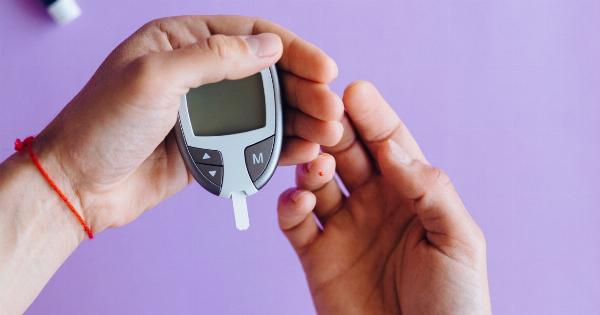Diabetes is a chronic lifelong condition that occurs when the pancreas does not produce enough insulin or when the body is unable to effectively use the insulin that it produces.
The result is an abnormal metabolism of carbohydrates and elevated levels of glucose in the blood. Diabetes is a growing problem worldwide, with an estimated 1 in 11 adults affected globally according to the International Diabetes Federation (IDF).
However, early detection of diabetes can help patients manage the disease much more effectively and lead a healthier life. In this article, we will discuss how an important milestone was achieved in the field of diabetes with the early detection of this disease.
Early Detection of Diabetes: A 50-Year Milestone Achieved
What is Diabetes?
Diabetes mellitus, commonly referred to as diabetes, is a chronic disease caused by the inability of the pancreas to produce enough insulin or the body not using the insulin produced effectively.
Insulin is a hormone that regulates blood sugar levels in the body. Glucose is the body’s main source of energy, and insulin helps the body utilize it effectively. Insulin allows glucose to enter cells in the body that use glucose for energy production.
Diabetes occurs when glucose builds up in the blood due to insufficient insulin or an inability to utilize insulin efficiently, causing a range of health problems in the long run.
The Growing Problem of Diabetes
Diabetes is a growing problem worldwide. The prevalence of diabetes has been increasing steadily over the past few decades, particularly in low- and middle-income countries.
According to the IDF, an estimated 463 million adults are living with diabetes worldwide. The vast majority of these are cases of type 2 diabetes. This has resulted in significant health and economic impacts globally, putting a strain on healthcare systems and economies.
In addition, individuals with diabetes have an increased risk of developing other health problems such as cardiovascular disease, retinopathy, neuropathy, and kidney disease.
Importance of Early Detection of Diabetes
Early detection of diabetes is crucial for managing the disease and minimizing complications. Early diagnosis and treatment can control blood sugar levels, prevent or delay the onset of complications, and improve quality of life.
Diabetes that remains undiagnosed and untreated can lead to more serious health problems, including nerve damage, vision loss, kidney disease, and heart disease.
50-Year Milestone: A Game Changer in Diabetes Detection!
A significant breakthrough was achieved in 2020 when an international group of researchers announced the 50-year milestone of a blood test that could detect prediabetes and diabetes in its early stages.
The test, known as Hemoglobin A1C (HbA1C), is a measure of average blood glucose levels over a period of two to three months and is considered a benchmark for diagnosing diabetes.
The 50-year milestone is significant because the first published study on the use of HbA1C in the diagnosis of diabetes was published in 1976.
Over the past 50 years, the test has been refined, standardized, and widely used as a diagnostic tool to identify those with diabetes and those at high risk of developing diabetes. HbA1C is useful because it provides an average glucose level over a period of time and is not subject to variation in glucose levels throughout the day.
How HbA1C Works
HbA1C is a blood test that measures the concentration of glucose that has bound to hemoglobin in red blood cells.
The HbA1C test is an excellent way of assessing long-term glucose control in a patient and can be used as a diagnostic tool for diabetes and prediabetes. The HbA1C test provides an average of blood glucose levels over the previous two to three months. The American Diabetes Association has recommended using an HbA1C level of 6.5 % or higher to diagnose diabetes.
Benefits of Using HbA1C for Diabetes Detection and Management
There are numerous benefits of using the HbA1C test to detect and manage diabetes:.
- Accuracy: HbA1C provides accurate information on blood glucose levels over a period of time, rather than just a snapshot of blood glucose levels at a particular moment.
- Standardization: HbA1C test results are standardized, ensuring uniformity and consistency across different labs and healthcare organizations.
- Early detection: HbA1C is a useful tool for detecting prediabetes and diabetes before symptoms occur, leading to early detection, and intervention to control blood sugar levels and prevent or delay complications.
- Monitoring: HbA1C is an effective tool for monitoring blood sugar levels and adjusting treatment plans for patients who have already been diagnosed with diabetes.
Conclusion
The early detection of diabetes is vital to the health and well-being of people worldwide. The successful HbA1C milestone is an example of how the scientific community is working to improve diabetes management through innovative tools and research.
Early detection can prevent or delay the onset of complications, improve treatment outcomes, and enhance the quality of life for patients with diabetes. It is essential to continue to develop and refine tools and techniques for the early detection and management of diabetes to stem the rising tide of this disease worldwide.




























